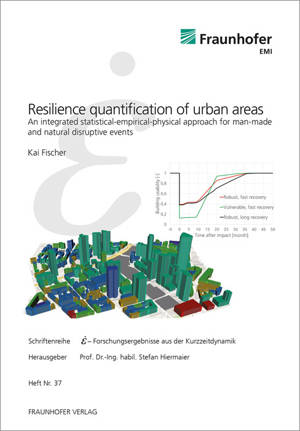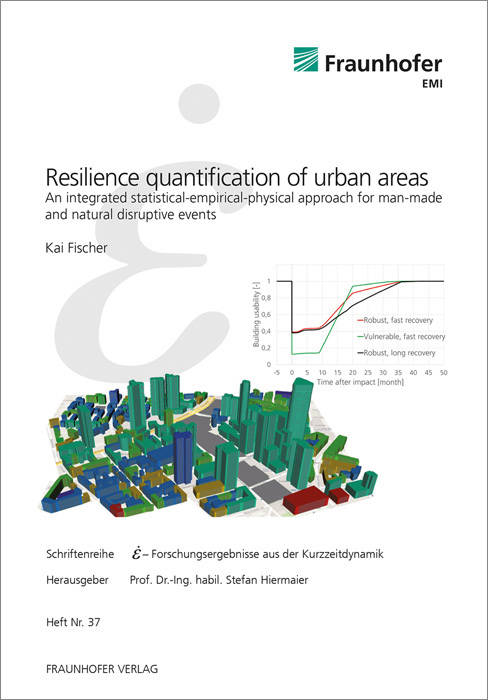
- Afhalen na 1 uur in een winkel met voorraad
- Gratis thuislevering in België vanaf € 30
- Ruim aanbod met 7 miljoen producten
- Afhalen na 1 uur in een winkel met voorraad
- Gratis thuislevering in België vanaf € 30
- Ruim aanbod met 7 miljoen producten
Zoeken
Resilience quantification of urban areas
An integrated statistical-empirical-physical approach for man-made and natural disruptive events
Kai Fischer
€ 83,95
+ 167 punten
Omschrijving
A growing urbanization, an increasing complexity of critical infrastructure and the formation of new threats are new challenges for urban areas and require a sustainable development and a stronger coping capacity with potential adverse events. Sustainability requires a strengthening of resilience.
Within this work, an integrated mathematical approach for the quantification of resilience is defined. This method allows a comprehensive evaluation of urban areas and the identification of weak spots. Statistical data are combined with physical models to assess the occurrence of multiple threats and their potential consequences. This risk based assessment is combined with time dependent recovery models to result in a quantity for resilience. Results of this framework can be applied to evaluate the effectiveness of single resilience phases, like prepare, prevent, protect, response and recover.
Besides the mathematical formulation, application examples in this work assess exemplarily terroristic threats in urban surroundings with empirical information of historical events and engineering models to assess possible structural damage effects. The comparison of different urban footprints builds the basis for a resilient urban planning process.
Within this work, an integrated mathematical approach for the quantification of resilience is defined. This method allows a comprehensive evaluation of urban areas and the identification of weak spots. Statistical data are combined with physical models to assess the occurrence of multiple threats and their potential consequences. This risk based assessment is combined with time dependent recovery models to result in a quantity for resilience. Results of this framework can be applied to evaluate the effectiveness of single resilience phases, like prepare, prevent, protect, response and recover.
Besides the mathematical formulation, application examples in this work assess exemplarily terroristic threats in urban surroundings with empirical information of historical events and engineering models to assess possible structural damage effects. The comparison of different urban footprints builds the basis for a resilient urban planning process.
Specificaties
Betrokkenen
- Auteur(s):
- Uitgeverij:
Inhoud
- Aantal bladzijden:
- 252
- Taal:
- Engels
- Reeks:
- Reeksnummer:
- nr. 37
Eigenschappen
- Productcode (EAN):
- 9783839613573
- Verschijningsdatum:
- 30/10/2018
- Uitvoering:
- Paperback
- Afmetingen:
- 148 mm x 210 mm
- Gewicht:
- 369 g

Alleen bij Standaard Boekhandel
+ 167 punten op je klantenkaart van Standaard Boekhandel
Beoordelingen
We publiceren alleen reviews die voldoen aan de voorwaarden voor reviews. Bekijk onze voorwaarden voor reviews.











